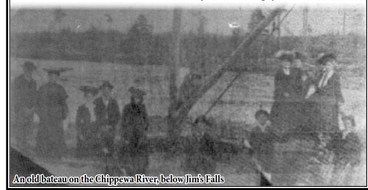Tales of our Beginnings – Life in the Logging Camps • Part II


As part of their work in the logging camps, men were assigned various jobs in the woods. There were those who marked trees to be felled, men to cut the marked trees and swampers who sawed the downed trees into logs. In some places, swampers cleared brush and made paths to the tote roads for the logs to be hauled to the stream for spring run-off.
Once spring came, the logs would shoved into the water and floated downstream to a sawmill. In early years, trees were cut closest to streams and oxen were used to haul just a few logs at a time. Over time, roads were built and horses came into use, because they could maneuver better than oxen on the icy roads, carrying larger loads of logs.
Roads had an ice coating on them for easier pulling of the sleds. When the road went downhill, men called “road monkeys” had to spread hay or sometimes salt on the tracks to slow the load down.
At the streams, logs were stacked, marked with a stamp for each logging company and put into the water. Men would channel a log into the correct sluice for a mill. Jams often occurred with the drives by water, which was a dangerous hazard to logging. Many a man lost his life or was permanently injured, because of the shift in logs as they “piled” together in the stream or came crashing down on top of the men.
The dangers of working in the woods filled memories for years to come, and continues, long after the era was ended. (Courtesy of The Making of Jim’s Falls and Area)
An old bateau on the Chippewa River, below Jim’s Falls




